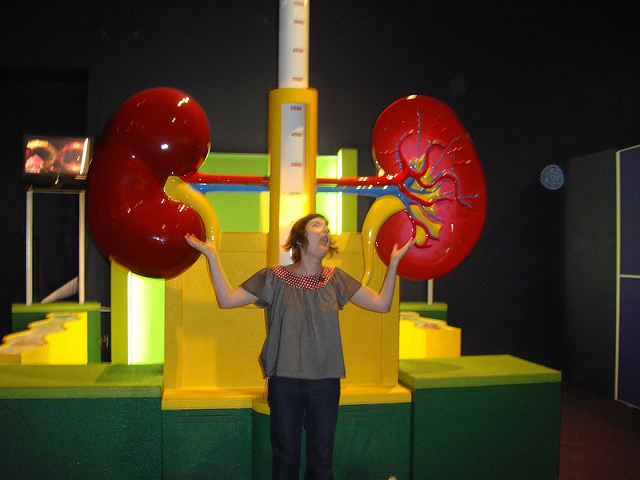
Image courtesy of Becky Striepe at Flickr.com
Stage 3 CKD is something that has to be taken seriously. In a previous post in this same blog, we talked about the 5 stages of Chronic Kidney Disease. We understood that stage 1 and stage 2 are not that serious and that the illness can be managed with diets and good habits. We also learned that Chronic Kidney disease in these two stages is invisible and that is very hard to detect unless other tests are done. We also learned that stage 3 is divided into two stages and that is here where the thing gets really serious (especially in stage 3B) and that it will be most likely that the patient needs treatment, medications, special diets and future dialysis and specific kidney treatments. Stage 4 and 5 are the last stages where the kidney is already working under 50% and the patient will need a transplant and a serious and well-managed treatment combined with diets and medications and we learned that stage 5 is already terminal and the patient has to be managed very carefully.
Today we are going to take a look at stage 3A within a Chronic Kidney Disease, the way it should be assessed and managed, the risk factors every patient has and some tips to prevent the progression of stage 3 in CKD.
Assessment and management of Stage 3 CKD
Most Stage 3 CKD patients are not at high risk and can be managed with primary care. The objective becomes to identify the patients that are in risk of passing on to stage 3B and its associated risks.
The most important symptoms or pointers in stage 3A of patients at risk are: When the patient´s proteinuria is ACR>70 or PCR>100; the patient has a declining GFR and he or she is at a young age. After these pointers, doctors have to ask themselves if the patient is functioning well, if the patient has a history of this illness and if there has been any urinary abnormalities or other specific indicators.
The first value that has to be determined is the creatinine levels to see if they are elevated. Then compare them with previous tests and values. If previous tests don’t exist, there has to be a 14-day gap to take another test and compare values and it has to take them to the lab as deteriorating renal function needs rapid assessment.
As for the clinical assessment, the tests focus on heart failure or direct assessment of bladder enlargement. This can be done by imaging which can indicate the level of obstruction that doctor suspect. Here urine tests become ever more important because they can indicate the amount of proteinuria by ACR/PCR that can be seen in the body and this is a reliable indicator of progressive renal disease.
Management of Stage 3 CKD
In this stage, there is always a big cardiovascular risk. The idea is that the person starts having a healthier lifestyle and quit bad habits such as smoking, and starts a discipline in their exercise and eating habits. There should also be a cholesterol lowering therapy or approach if there are already any macrovascular disease symptoms. In this stage of CKD, the patients tend to be over 60 or 70 years old and most of them do not go onto stage 4. However, there should be a close assessment and control over diseases such as heart attacks, strokes, and narrowing of other arteries.
Stage 3 CKD risk factors
When we talk about risk factors we are mainly talking about cardiovascular events. The patient has to be monitored on his or her proteinuria, hematuria, and declining GFR levels and they must be closely managed. This is an accurate indicator that the CKD is progressing. The idea of understanding these risk factors is that doctors can accurately attack the kidney disease either by reducing the risk of having cardiovascular complications or by prescribing treatments that slow down or stop the progression of CKD.
Tips to prevent stage 3 CKD

Image courtesy of Dialysis Technician Salary at dialysistechniciansalary.org
Basically, there are three ways a person can prevent the body reaching stage 3 CKD: the first one is to have a kidney-friendly diet; the next one is to have a very good discipline when it comes to medications, and the third one is to exercise.
As for a kidney-friendly diet the idea is to eat the correct amount of calories, cut down on phosphorus-rich foods because it is very hard for the kidney to process this type of food and avoid high-potassium foods (if there is a possibility of a dietician it is a good idea because people can understand the amount of potassium they can take.
Medications include drugs to prevent risk factors such as blood sugar levels and blood pressure.
Exercising and non-smoking become very important at this stage just to prevent the progression of CKD and to help the patient live his life as normal as possible.
Be sure to also read this post about The Most Significant Early Symptoms Of Kidney Disease



